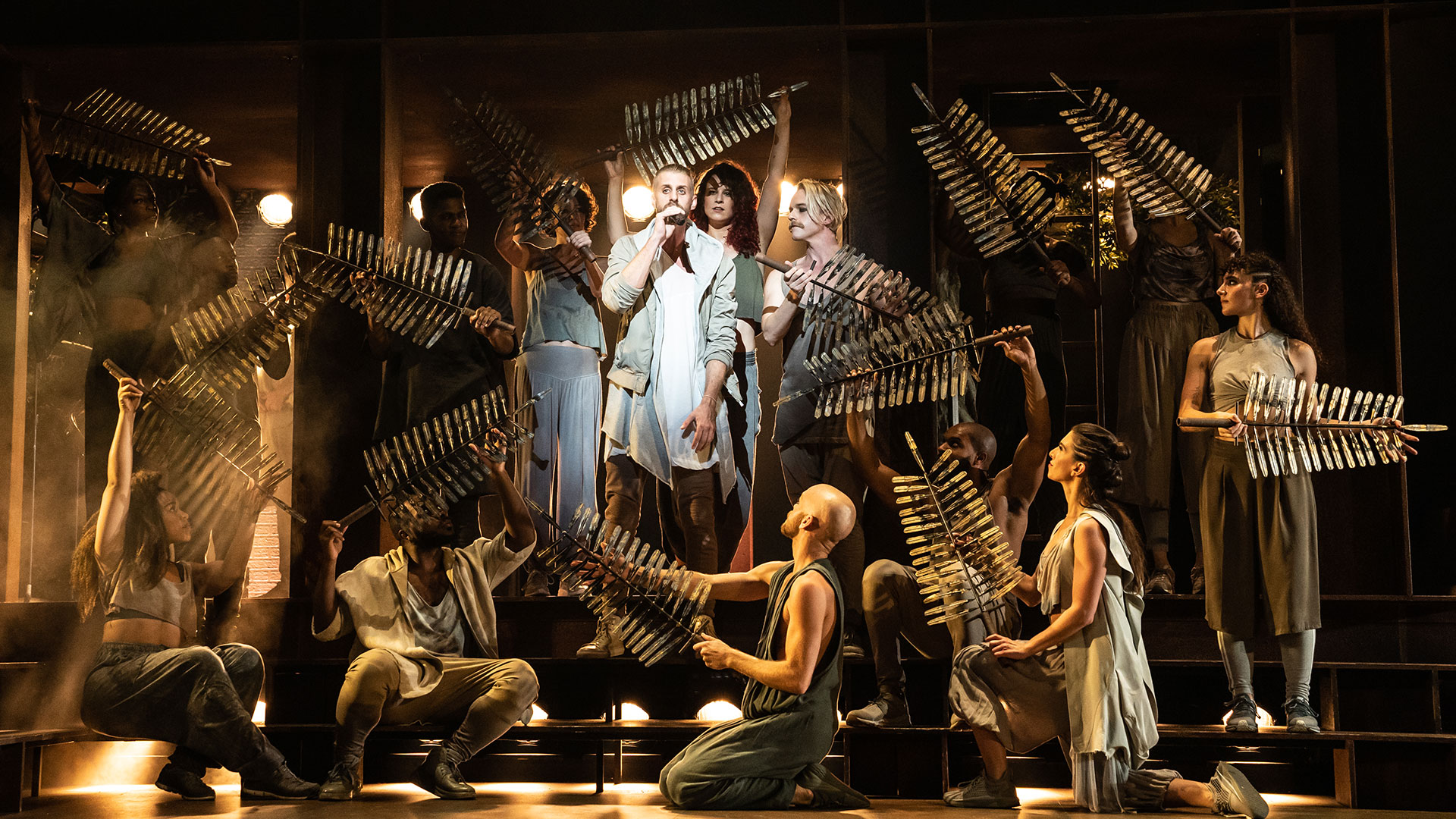I have always loved the musical Jesus Christ Superstar and I know many rabbis who count this show among their favorites as well. Recently, I had the opportunity to see the National Touring production and now I have to reconsider this love. Not because the show wasn’t good – it was quite phenomenal actually – but because, for the first time, I saw this show as a story in which I can only fit as an antagonist.
Like me, Jesus Christ Superstar is celebrating its 50th year and when it first emerged the show was greeted as transgressive, daring to present Jesus not only as a man but caught up in doubt and frustration while surrounded by what could be the extras from Hair, a hippie generation looking for a leader. Judas was the voice that seemed truest to the mission, eyes on a vision of spreading a message of charity and uplift yet “frightened by the crowd” who “think they found their new Messiah” the best friend becomes the betrayer. All of these elements plus a rock and roll score, brought Churches out in droves to protest – and made the show so attractive for those of us moved by a struggle with faith and doubt.
In this production, Jesus does not struggle at all. He suffers. Beset from all sides by the temptations of both glory and escape, Jesus fends them off with righteous conviction. Judas is a scoffer and a scold whose only merit is that his part in the proceedings was preordained. The villainous Pharisees and gaudy Herod and reluctant Pilate cheered on by the crowds is par for the course, but here they are not exceptions but representations of all of Jewish Jerusalem, equally callous and glammed and glittered and decadent. Tellingly, the crush of people who overwhelm Jesus with requests to be healed is not pathetic souls who can’t all be helped but hissing writhing forms like snakes who serve as another obstacle placed in the Savior’s way. In other words, this is a true Passion play. Jesus surrounded by anachronistically cross-carrying followers, against the crowds, whips, and thorns to finally take his place to be crucified before all of Jerusalem and all of the audience, tortured on the cross in palpable agony.
No Church would have reason to raise the objections of fifty years ago, not just because rock is commonplace and in some Churches a mode of worship, but because any humanity of Jesus other than the pathos of his sacrifice, was stripped away. To paraphrase Judas there was now no talk of man, for they called him their God. This emphasis is fitting and beautiful for those who believe that Jesus is much more than any human could imagine. But I felt like an interloper watching an exquisite and disturbing spectacle from a respectful distance. Like on an occasion where I was graciously invited to another’s worship service and found there were parts I could appreciate but in which I couldn’t participate because the message was too much against my own faith and peoplehood. I was not offended on those occasions, after all, it’s their church. But here I was in a theater watching a show I know by heart.
I still love the music and the power of the show, but I don’t think I can forget that at the heart of the story is the story that was brought to the fore in this production. Not faith struggling with human uncertainty but faith refusing to give any quarter to non-believers even as it clothes itself in the garb of the non-conformist. The fight with outside demons and not the grappling with inner ones. I can have the utmost respect for those for whom that model of faith, any type of faith, is foundational. But as a grappler and a descendant of the real Pharisees, it is now a show I don’t know how to love

Michael Bernstein, a Rabbi, has served since 2009 as Rabbi of Congregation Gesher L’Torah, a vibrant and dynamic Synagogue community in north Atlanta where each person’s story is embraced and Judaism is personal. He was ordained as a conservative Rabbi at the Jewish Theological Seminary in New York in 1999. He and his wife Tracie have three children, Ayelet, Yaron and Liana.

